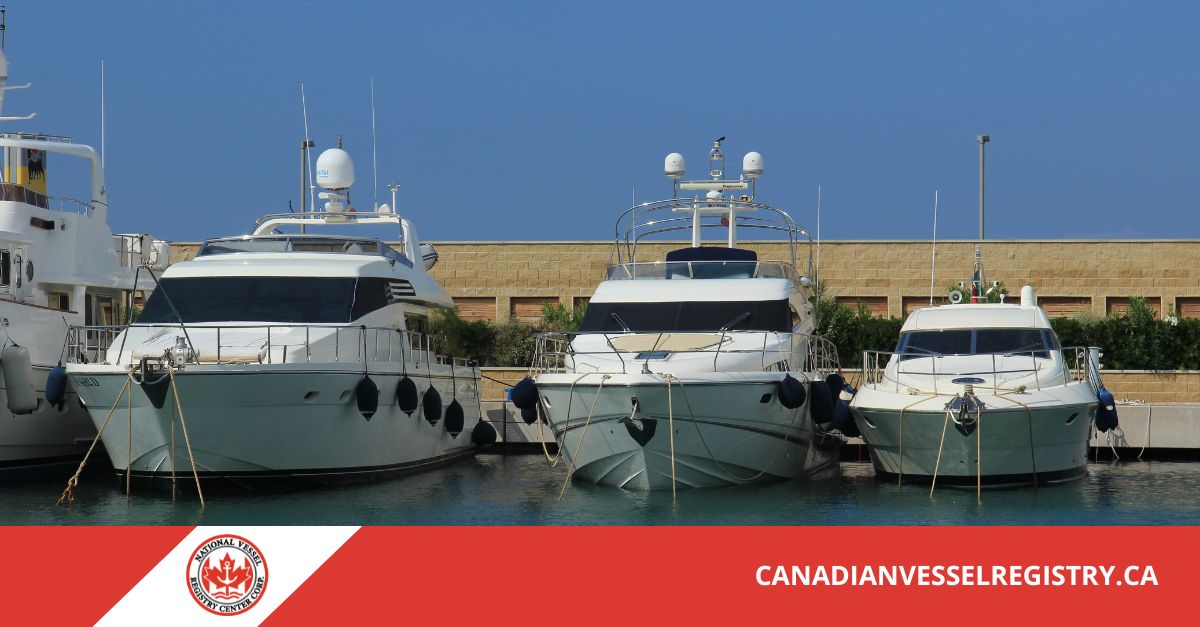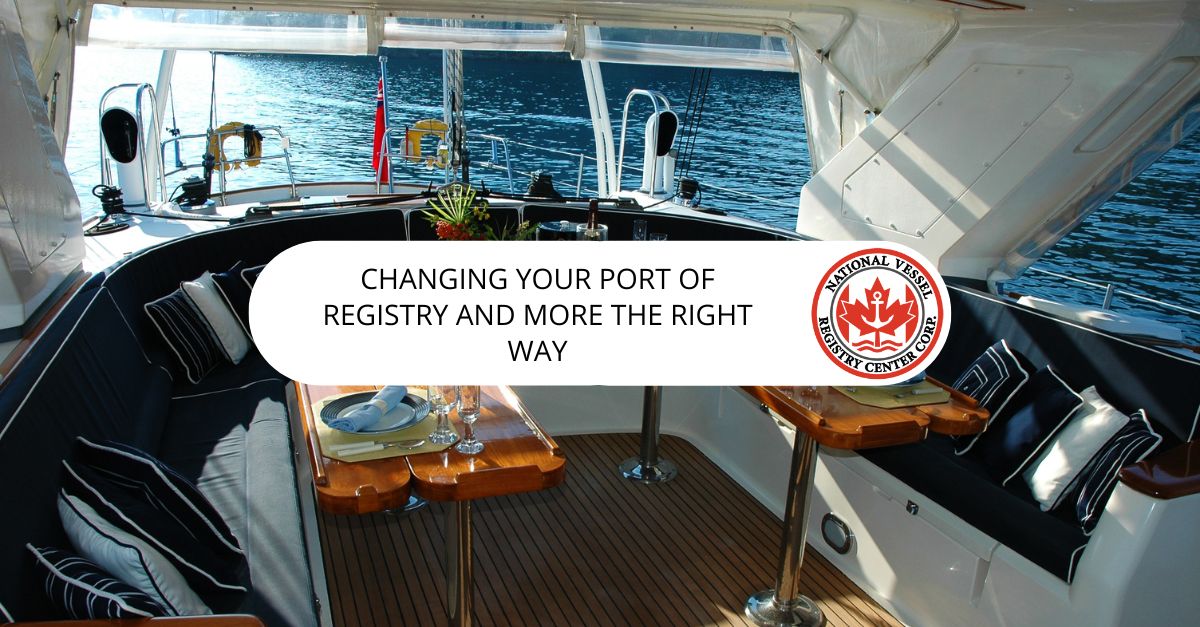Owning a boat is more than a leisure choice; it’s a commitment that comes with important administrative responsibilities. A key element of this is understanding your port of registration—the official location tied to your boat’s registration with Transport Canada. This isn’t just a bureaucratic step; it’s a crucial part of ensuring your boat complies with Canadian maritime laws and is properly documented. Whether you’re registering your boat for the first time, deciding on the right port, or updating an existing registration, knowing how to manage your port of registration is essential.

What is a Port of Registration?
A port of registration (or “port of registry,” as it’s also often referred to) is the specific location where your boat’s official documentation is stored and maintained. It’s tied to the Transport Canada database and acts as your boat’s “home port” on paper. Essentially, this is where your registration information is held, regardless of whether your boat is docked at that location regularly.
Some people confuse the port of registration with the physical location of the boat itself. However, the port assigned to your registration is often more about administration rather than where you physically store or operate your boat. Having this registration is part of operating legally within Canada, ensuring compliance with the Canadian Boat Registry system and related regulatory frameworks.
Finding the Right Port of Registration
Selecting the appropriate port of registration requires careful consideration. While the location you select doesn’t necessarily dictate where you keep or use your boat for the majority of its operation, it does influence many aspects of your registration and fees.

Location Matters
Most boat owners choose a port of registration close to their primary docking site for practical reasons. For example, if your home or primary marina is in Halifax, you may choose to register the boat at that port to make the paperwork more straightforward. This kind of convenience is key for owners who prefer simplicity.
However, other factors might influence your choice. Things like administrative costs, dock storage fees, and personal schedules could play a role in determining the port that makes the most sense for you.
We recommend reviewing which ports are available through Transport Canada and which would align best with how and where you use your boat.
Tied to Legal Documentation
Your port of registration also plays an important legal role, particularly during sales of your boat or procedures like transferring it into another owner’s name. It serves as a central repository of ownership and technical details about the boat, helping verify everything from legal title to eligibility for a pleasure craft licence.
How to Update or Change Your Port of Registration
Over time, your circumstances may change, and you might need to update the port linked to your registration. Common reasons for this include relocating, docking at a new marina, or even selling the boat to someone who lives in a different region. When this happens, the changes need to be reflected in the records held by Transport Canada.
Submitting a Port Update Form
To change your port of registration, you’ll need to complete the appropriate form provided by Transport Canada. This ensures the database remains accurate and up to date, reflecting current ownership and storage arrangements.
Rather than searching for the forms or worrying about technical issues, you can use our online platform. With it, you can access and submit everything you need. Changing your port is a simple process, too. Our services make it even easier by allowing you to locate the necessary forms through our streamlined, user-friendly website.
We understand the process can sometimes feel tedious, so offering clear, accessible tools makes it easier for you to confidently handle tasks like updating your port of registration.
Why Keep Records Updated?
Ensuring your records are accurate isn’t just about legal compliance. It protects you as a boat owner, ensuring that regulatory matters, taxes, and other location-based concerns are filed correctly. For example, if you sell your boat, ensuring the port of registration is current will simplify and expedite the transfer of ownership to the new buyer.
Registering Your Boat for the First Time
Whether you’ve just purchased a boat or brought one in from outside Canada, registering it with Transport Canada is one of the first administrative steps you’ll need to handle. Without this, your boat won’t meet federal requirements, and you could face complications when trying to operate it legally.
Information You’ll Need
The process requires providing detailed information about your boat. You’ll need to include key specifications. These include the manufacturer, length, construction details, and any unique identification numbers like the Hull Identification Number (HIN). Additionally, you’ll have to provide your personal information as the owner, along with the desired port of registration.
Once you’ve gathered this information, submitting the forms via our platform is quick and secure. Our website is designed to ensure you can complete the necessary steps without unnecessary hassle, making the registration process smoother.
What Happens After Registration?
Once you submit your application and it’s approved, you’ll receive official documentation confirming your registration and port of registration. This paperwork is critical—it acts as proof of your boat’s legal standing and ties it to a specific location in the Canadian ship registry. Always keep these documents in a safe, accessible location. Why? Because you may need them during inspections or other formal processes.
Using Our Services to Save Time
At the National Vessel Registry Center Corp., we know life is busy. It’s not always convenient to wade through administrative tasks. To help, we’ve made our platform fully mobile-friendly. So, you can access and complete registration forms from anywhere at any time.
Whether you’re registering a boat for the first time, transferring its ownership, or changing its port of registration, we simplify the process. Our intuitive online system allows you to quickly locate and fill out any form you may need, with no complicated steps or confusion.
Security and Convenience at Your Fingertips
We prioritize security and operational efficiency. All the forms on our site are secure and encrypted, ensuring your personal and financial information remains protected during submission. Best of all, it’s easy to get started—all you need is a few essential details about your boat, and the system will guide you from there.
Stay Compliant with Canadian Maritime Laws
Boating in Canada involves adhering to federal rules and frameworks designed to protect both owners and the marine environment. Whenever you’re registering your boat, changing details, or updating its port of registration, staying compliant with Canadian maritime laws is a must. Not only does this protect you legally, but it ensures smooth operations wherever your boat takes you.
Whether you’re cruising along scenic coastlines or moored at your favorite marina, legal compliance starts with accurate and up-to-date registration details.
Get Started Today
Your boating adventures should be smooth sailing, and the administrative aspects shouldn’t hold you back. By using our services, you can ensure everything from registering your boat to updating your port of registration is handled efficiently. With the right tools and support, staying compliant becomes one less thing to worry about.
Start your registration, get your pleasure craft licence, and so much more through our portal. That way, you can get back to focusing on where the waters take you next.

